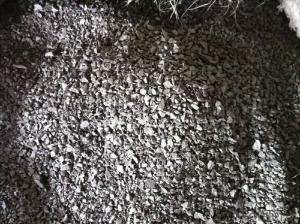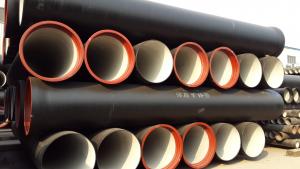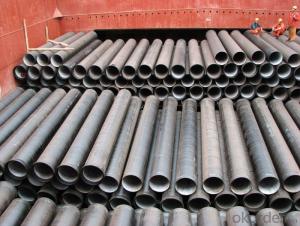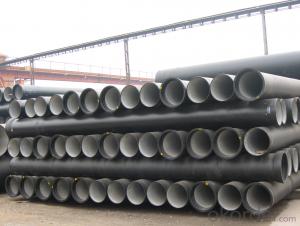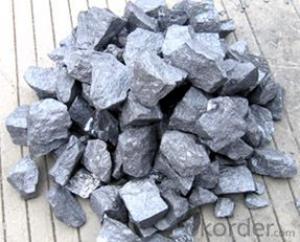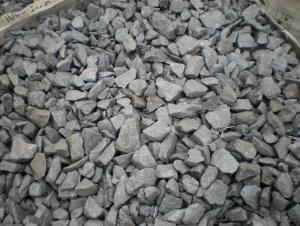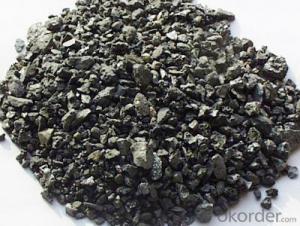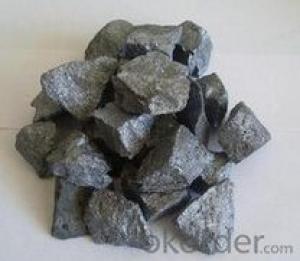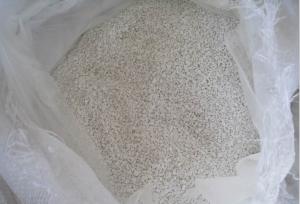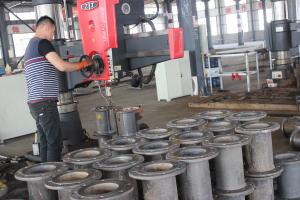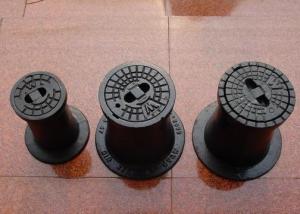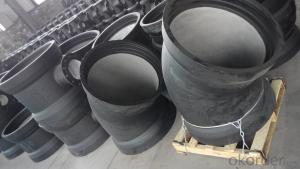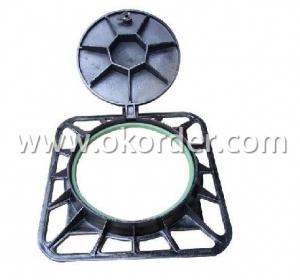Silicon Ferror 65%
- Loading Port:
- China Main Port
- Payment Terms:
- TT OR LC
- Min Order Qty:
- -
- Supply Capability:
- -
OKorder Service Pledge
OKorder Financial Service
You Might Also Like
Specifications
1 factory supply directly2 quality in guarantee
3 timely delivery
4certificate:SGS/CIQ/ISO
products information
Our factory supply 75% 72% 65% 45% four grades of ferrosilicon.
Ferrosilicon has been widely applied.in the steel industry, foundry industry and other industrial production.
Ferrosilicon is indispensable deoxidizer in the steel industry., ferrosilicon is used for precipitation deoxidation and diffusion deoxidation in Ju steel. Brick iron also as an alloying agent used in steelmaking. Adding a certain amount silicon to the steel can significantly improve the strength, hardness,elasticity and permeability of steel, reduce the hysteresis loss of transformer steel.
High ferrosilicon or silicon alloys is used for the production of low-carbon reductant in ferroalloy industry. Adding ferrosilicon to cast iron can be inoculant for ductile iron, and can prevent the formation of carbides, and promote the precipitation of graphite and the nodulizing, so as to improve performance of cast iron.
In addition, ferrosilicon powder can be used as a suspended phase in the mineral processing industry,and coatings for welding electrodes in the electrode manufacturing.
In the steel industry, one ton of steel consumes about 3 ~ 5kg75% ferrosilicon.
Melting point: 75FeSi to 1300 ℃
Brand | Chemical Composition/% | |||||||
| Si | Al | Ca | Mn | Cr | P | S | C |
| ≤ | |||||||
FeSi75A10.5-A | 74.0-80.0 | 0.5 | 1.0 | 0.4 | 0.3 | 0.035 | 0.02 | 0.1 |
FeSi75A10.5-B | 72.0-80.0 | 0.5 | 1.0 | 0.5 | 0.5 | 0.04 | 0.02 | 0.2 |
FeSi75A11.0-A | 74.0-80.0 | 1.0 | 1.0 | 0.4 | 0.3 | 0.035 | 0.02 | 0.1 |
FeSi75A11.0-B | 72.0-80.0 | 1.0 | 1.0 | 0.5 | 0.5 | 0.04 | 0.02 | 0.2 |
FeSi75A11.5-A | 74.0-80.0 | 1.5 | 1.0 | 0.4 | 0.3 | 0.035 | 0.02 | 0.1 |
FeSi75A11.5-B | 72.0-80.0 | 1.5 | 1.0 | 0.5 | 0.5 | 0.04 | 0.02 | 0.2 |
FeSi75A12.0-A | 74.0-80.0 | 2.0 | 1.0 | 0.4 | 0.3 | 0.035 | 0.02 | 0.1 |
FeSi75A12.0-B | 74.0-80.0 | 2.0 | 1.0 | 0.4 | 0.3 | 0.04 | 0.02 | 0.1 |
FeSi75A12.0-C | 72.0-80.0 | 2.0 |
| 0.5 | 0.5 | 0.04 | 0.02 | 0.2 |
FeSi75-A | 74.0-80.0 |
|
| 0.4 | 0.3 | 0.035 | 0.02 | 0.1 |
FeSi75-B | 74.0-80.0 |
|
| 0.4 | 0.3 | 0.04 | 0.02 | 0.1 |
FeSi75-C | 72.0-80.0 |
|
| 0.5 | 0.5 | 0.04 | 0.02 | 0.2 |
FeSi65 | 65.0-<72.0 |
|
| 0.6 | 0.5 | 0.04 | 0.02 |
|
FeSi45 | 40.0-47.0 |
|
| 0.7 | 0.5 | 0.04 | 0.02 |
|
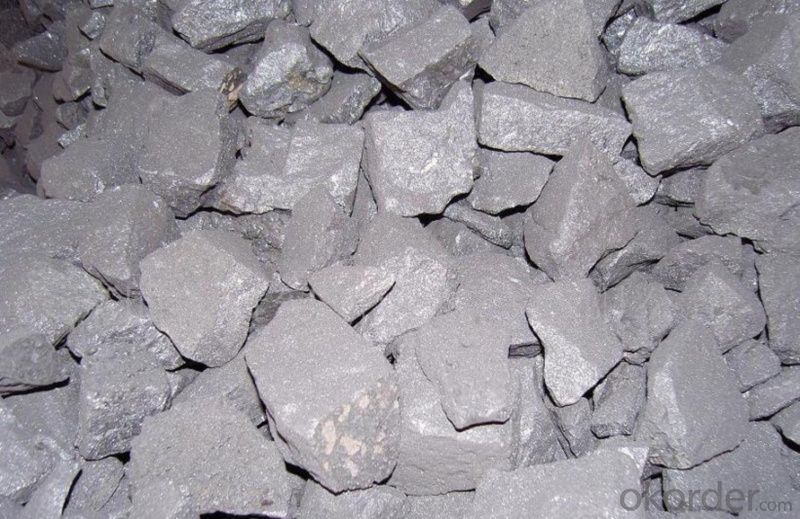
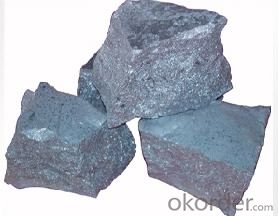
- Q: DN300 what's the price of the ductile iron pipe / the weight and the price of one meter?
- Ductile iron pipe is a kind of cast iron. It is an alloy of iron, carbon and silicon.
- Q: Can ductile iron pipes be used for potable water systems?
- Yes, ductile iron pipes can be used for potable water systems. Ductile iron is a strong and durable material that is resistant to corrosion and has been widely used in water distribution systems for many years. It meets the necessary standards and regulations for the transportation of potable water, making it a suitable choice for such applications.
- Q: What is the disadvantage of nodular cast iron in excess of silicon?
- Therefore, the increase of silicon content in nodular iron greatly improves the strength index and reduces toughness. Ductile iron has a greater crystalline undercooling and a tendency to chill when treated by spheroidizing, and silicon reduces this tendency.
- Q: Luo what effect of ductile cast iron
- Chromium can improve the hardness, strength and wear resistance of nodular iron, and increase bainite in bainite ductile iron.
- Q: What are the different types of thrust restraints for ductile iron pipe?
- Ductile iron pipe installations utilize various thrust restraints to prevent pipe movement or separation caused by internal pressure, external loads, or temperature changes. 1. Concrete thrust blocks are structures installed at bends, tees, and directional changes in the pipeline. Their purpose is to transfer thrust forces to the surrounding soil or foundation, effectively resisting pipe movement. 2. Mechanical restraints, such as tie rods or harnesses, are steel-based devices that apply external force to restrain the pipe. They can be adjusted to accommodate changes in pipe length or alignment. 3. Pipe anchors, made of steel, are installed at intervals along the pipeline to provide resistance against axial movement. These anchors are embedded into the surrounding soil or concrete, securing the pipe firmly. 4. Thrust collars, typically made of steel, encircle the pipe to prevent movement or separation. They are strategically placed along the pipeline to absorb thrust forces. 5. Restrained joint systems are specialized pipe joints designed to resist axial forces. They possess additional features like keyways or wedges, enhancing resistance against movement. Selecting the appropriate thrust restraint system for ductile iron pipe installations depends on factors such as pipe diameter, operating pressure, soil conditions, and potential external loads. Consulting with qualified engineers or pipe manufacturers ensures the proper selection and installation of thrust restraints.
- Q: Can ductile iron pipes be used for underground cable conduits?
- Yes, ductile iron pipes can be used for underground cable conduits. Ductile iron pipes are known for their strength, durability, and corrosion resistance, making them suitable for various applications, including underground cable conduits. Their ability to withstand heavy loads and external pressures makes them a reliable choice for protecting and housing underground cables.
- Q: I just bought some Titleist AP 1 from someone for 200 bucks.I am assuming these irons are cast ironsI just want to know the differences. Thanks
- Cast irons are made from castings (liquid metal poured into castings or molds) to form the rough shape of the club head. Forged head are formed by hammering or beating (by a machine) red hot metal into the form of the club head. Most pros play forged and most amateurs play cast (though more pros are using cast due to the forgiveness they provide). This would have been a great question to ask before shelling out 200 bucks on a set of irons.
- Q: Are ductile iron pipes suitable for potable water applications?
- Ductile iron pipes are indeed suitable for potable water applications. Their reliability and durability have been demonstrated through their longstanding use in water distribution systems. These pipes exhibit a commendable resistance to corrosion, a crucial factor in upholding the quality of drinking water. Moreover, ductile iron pipes possess a high tensile strength, reducing the likelihood of breakage or leakage. Furthermore, their smooth interior surface aids in maintaining optimal water flow and preventing the accumulation of deposits or contaminants. In conclusion, ductile iron pipes are an appropriate selection for potable water applications due to their impressive strength, durability, and corrosion resistance.
Send your message to us
Silicon Ferror 65%
- Loading Port:
- China Main Port
- Payment Terms:
- TT OR LC
- Min Order Qty:
- -
- Supply Capability:
- -
OKorder Service Pledge
OKorder Financial Service
Similar products
Hot products
Hot Searches
